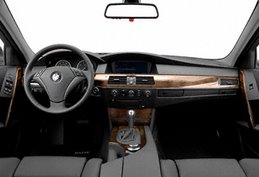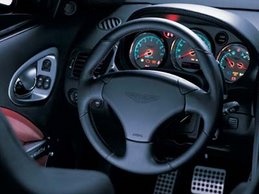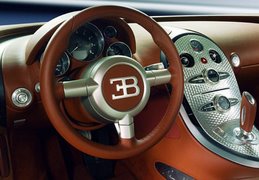 Acura RSX Type-S - Clearly, the RSX team had something that wasn't broken. But with three years in its logbook, the RSX wasn't new anymore. And since new is the essence of the car biz, they fixed it anyway, a midterm update that can't be called a major makeover but is too comprehensive to be called a mere freshening. Sure, it includes the kind of minor tweaks common to most updates—the industry equivalent of plastic surgery, nips and tucks aimed at preserving youth. Examples: A rear wing has sprouted from the decklid of the Type-S model, the front fascia has been honed to a sharper edge, the headlights are new, the visible portions of the front and rear underbody are wider, there are new side sills, and the static ride height has been dropped 0.3 inch—all of which makes the car look lower, wider, and more aggressive.
Acura RSX Type-S - Clearly, the RSX team had something that wasn't broken. But with three years in its logbook, the RSX wasn't new anymore. And since new is the essence of the car biz, they fixed it anyway, a midterm update that can't be called a major makeover but is too comprehensive to be called a mere freshening. Sure, it includes the kind of minor tweaks common to most updates—the industry equivalent of plastic surgery, nips and tucks aimed at preserving youth. Examples: A rear wing has sprouted from the decklid of the Type-S model, the front fascia has been honed to a sharper edge, the headlights are new, the visible portions of the front and rear underbody are wider, there are new side sills, and the static ride height has been dropped 0.3 inch—all of which makes the car look lower, wider, and more aggressive.The Type-S also gets a little more rubber—215/45R-17 Michelin HX MXM4s on 7.0-by-17-inch aluminum wheels versus the 205/55R-16s on 6.5-by-16-inch alloys previously employed. And the all-disc brake system has had updates to improve pedal feel. Bigger footprints, augmented by wider wheels and suspension tweaks, ought to add up to more grip, better transient response, and b
 etter stopping. And they do, although not, shall we say, dramatically.
etter stopping. And they do, although not, shall we say, dramatically.The payoff? Acura claims the revised RSX delivers performance favorably comparable with that of "European sports cars." We have to wonder just which European sports cars the press materials are referring to, since the RSX operates in a class composed of small, $25,000 front-drive sports coupes.
Still, the tweaks do add up to measurable results. The '05 Type-S sprints to 60 mph in 6.2 seconds versus 6.3 for our '02 comparo car, and it covers the quarter-mile in 14.9 seconds at 95 mph versus 15.0 at 94. These are respectable numbers, but we frankly expected them to be a little more respectable. Could an increase in curb weight of 68 pounds—attributable to body-shell stiffening and added sound damping—retard forward progress? It could.
The RSX still won't let you forget it's a front-driver. Its defining trait cont
 inues to be understeer. As with the original, a limited-slip diff would mitigate this and also enhance corner exits, probably more than the sum of all the chassis changes.
inues to be understeer. As with the original, a limited-slip diff would mitigate this and also enhance corner exits, probably more than the sum of all the chassis changes.But that's a track day sort of footnote. For all-around use—an "everyday sports car," as Acura calls it—the RSX is tough to top. It's quiet, comfortable, handsomely finished, good to look at, fast enough to dissect traffic, agile enough to be entertaining on your favorite stretch of back road. The Type-S was already top dog in its class. The improved version puts it even further ahead of the pack.













No comments:
Post a Comment